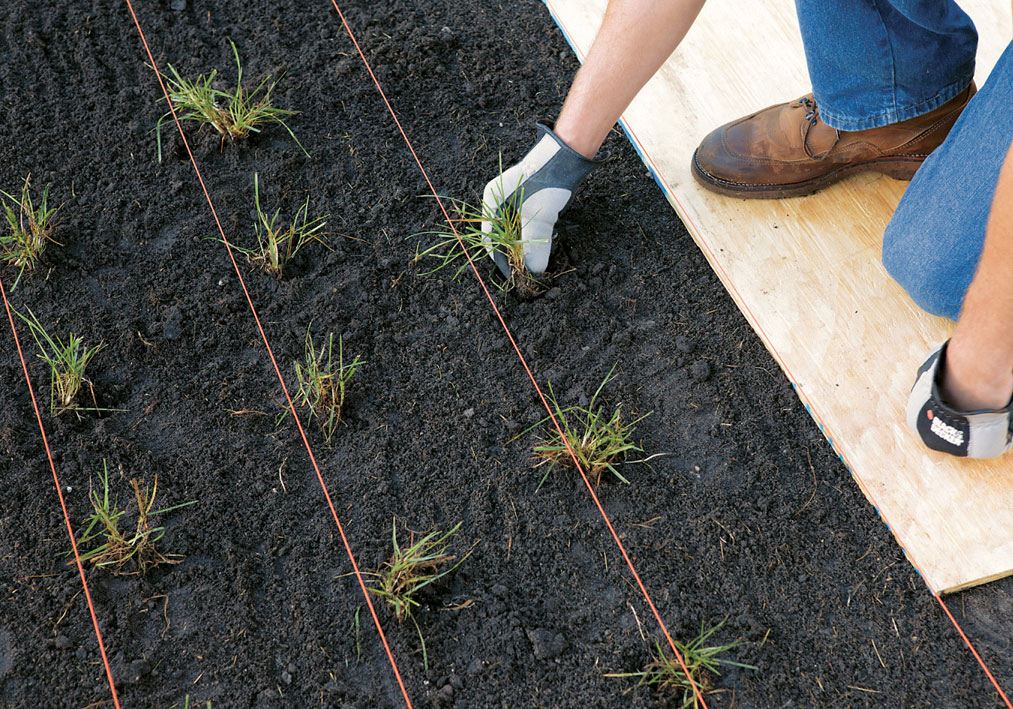 Selecting Lawn Plugs
Selecting Lawn PlugsGrowing a lawn from plugs falls in the middle ground between seeding and sodding a lawn. The plugs are cut from sod in 2- to 4-inches squares (or, less often, rounds), which are then planted individually in a grid across the lawn’s area. The cost is a little over half of what sod would run you to cover the same area, but is still 10 times more expensive than seed.
Labor-wise, planting plugs is on par with the effort you’d dedicate to laying sod, because each plug is planted in an individual hole. The plugs are purchased in much the same way as sod is, through a nursery or garden center that contracts with a grower.
The grower cuts the plugs from sod, and so can you. But that will double your workload, without saving you much money. Buying plugs is, therefore, usually the wiser course of action. But use the same criteria for plugs that you would for assessing the quality of sod. You want them as fresh as possible, kept moist and cool.
Be aware that depending on the type of grass, plugs can take up to two growing seasons to completely fill in a lawn. In the interim, weeds are a big challenge for the bare spots between the plugs, and applying a selective herbicide is often part of the regular maintenance of a lawn grown from plugs. This drawback is the reason plugs are usually only offered for grasses that are prohibitively expensive as sod and those that aren’t regularly available as seed. Zoysia is the most common grass planted from plugs for these reasons, and most plug grasses are warm-season species, because the longer growing cycle helps the lawn fill in quicker.

Plugs are small clumps of sod that are planted in a regular pattern as a cost-effective alternative to laying sod. It usually takes two growing seasons for the plug roots to entirely spread and fill out the lawn.